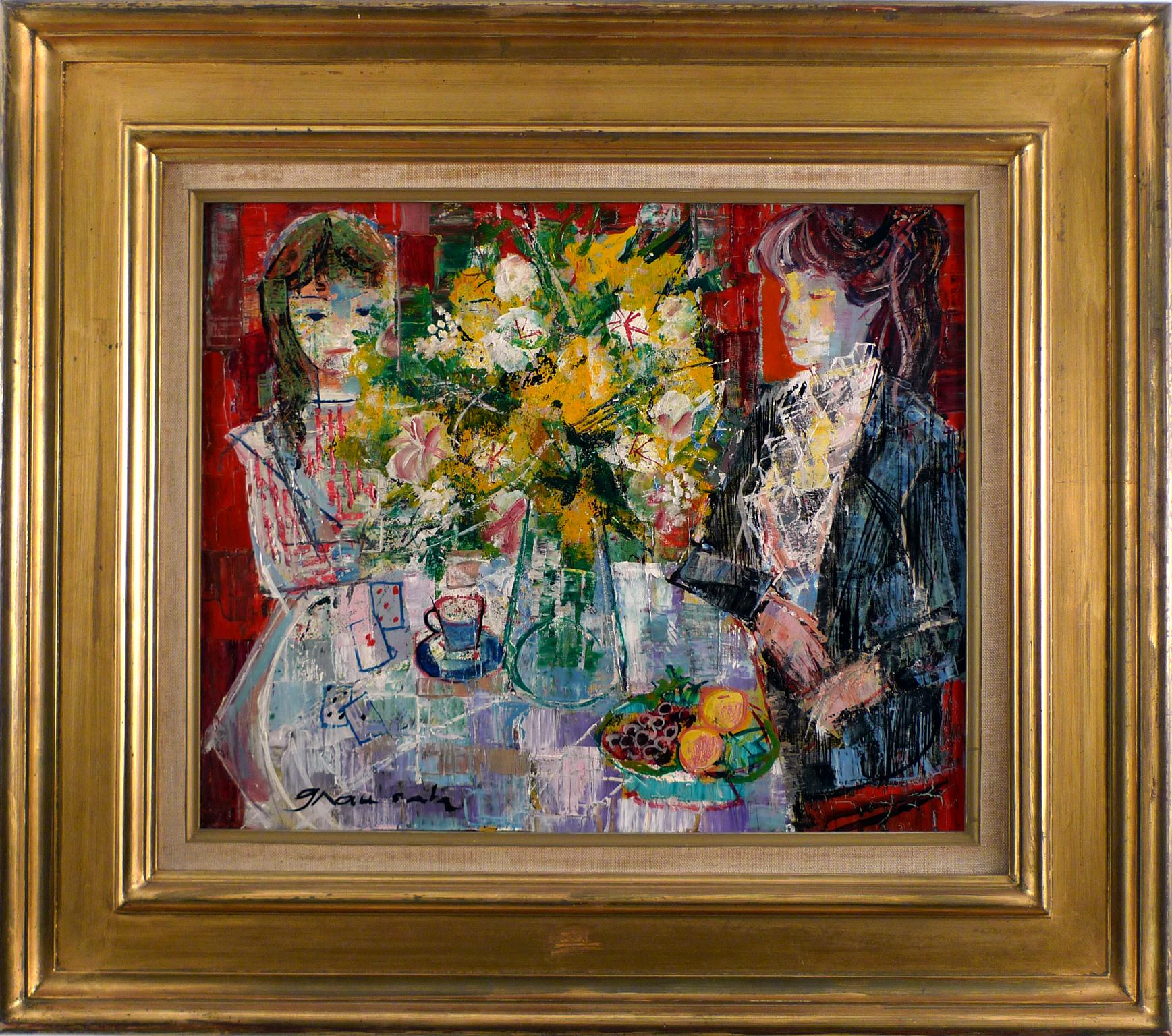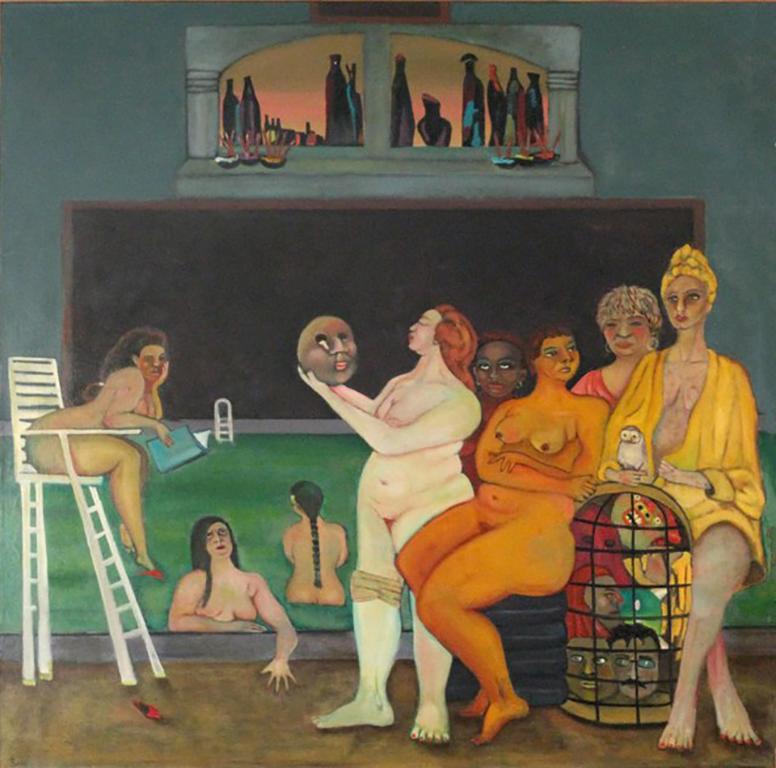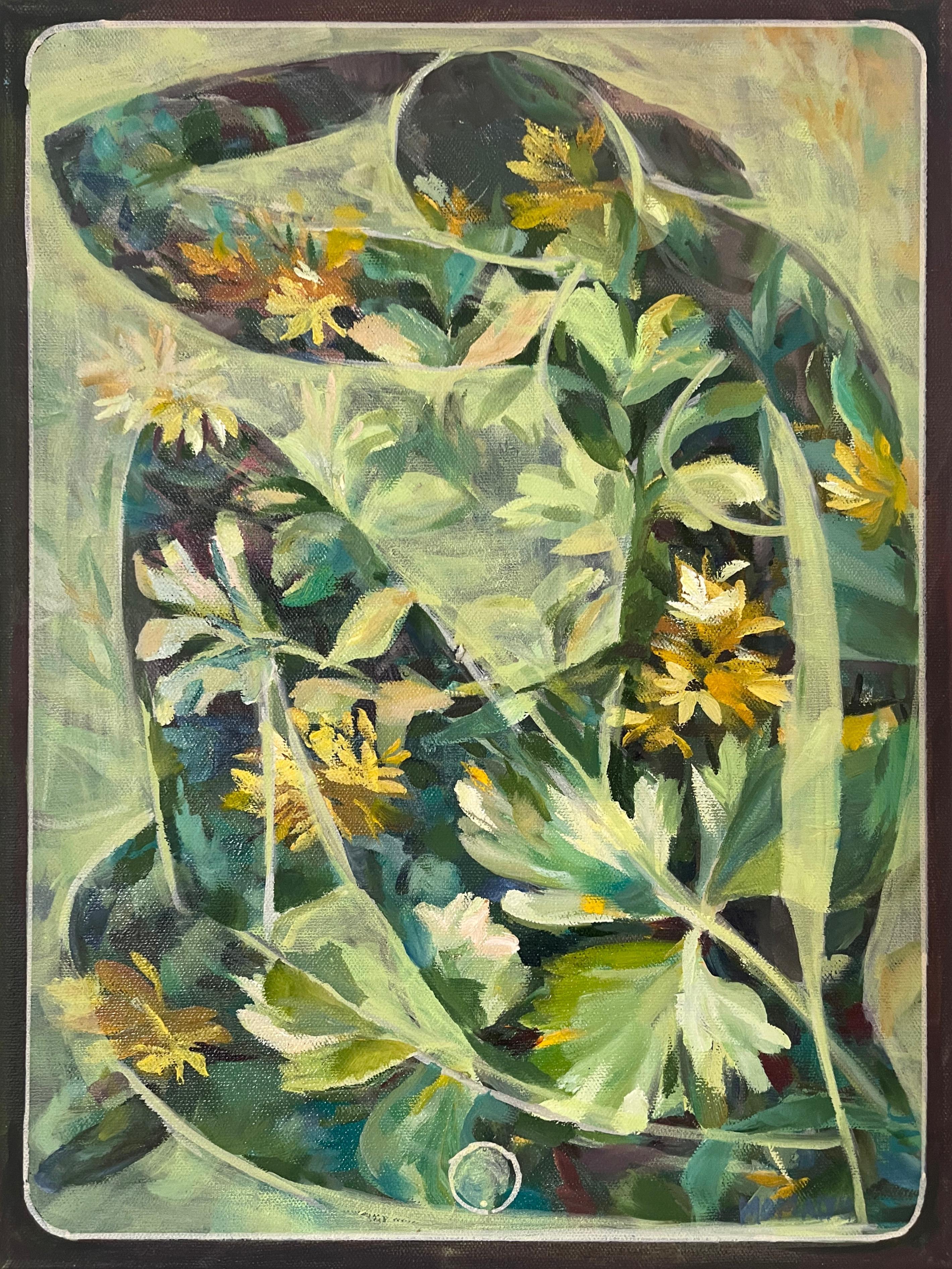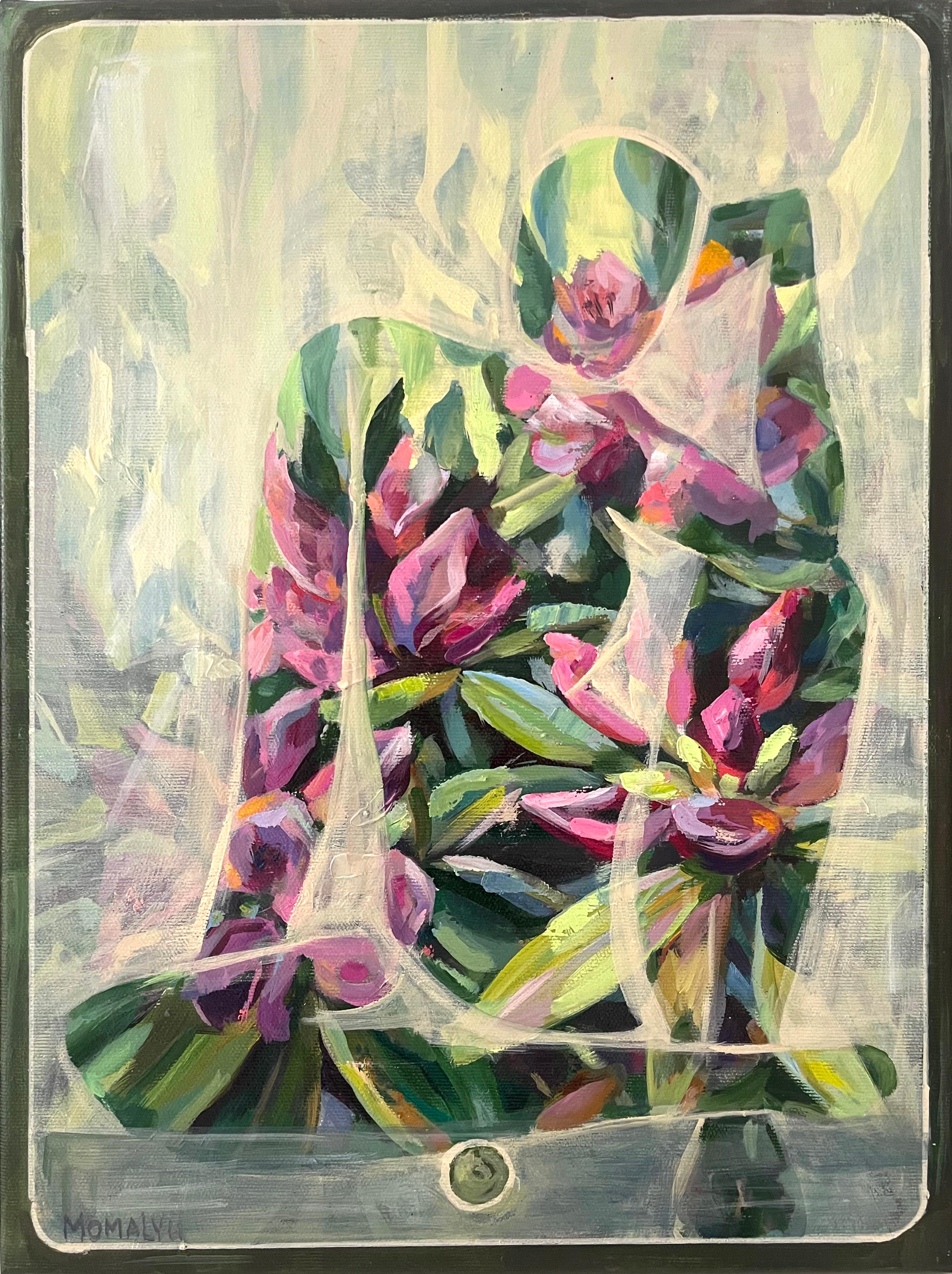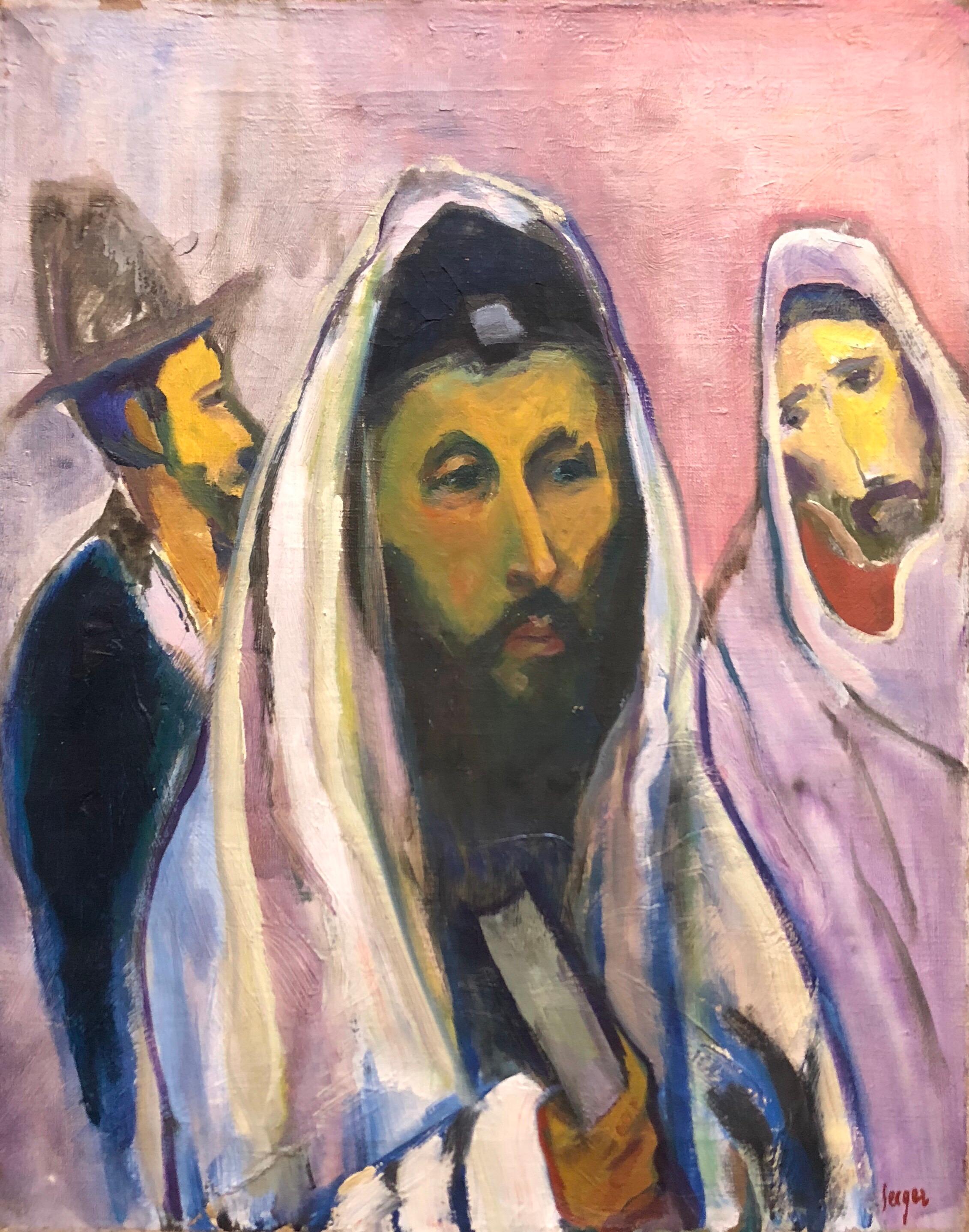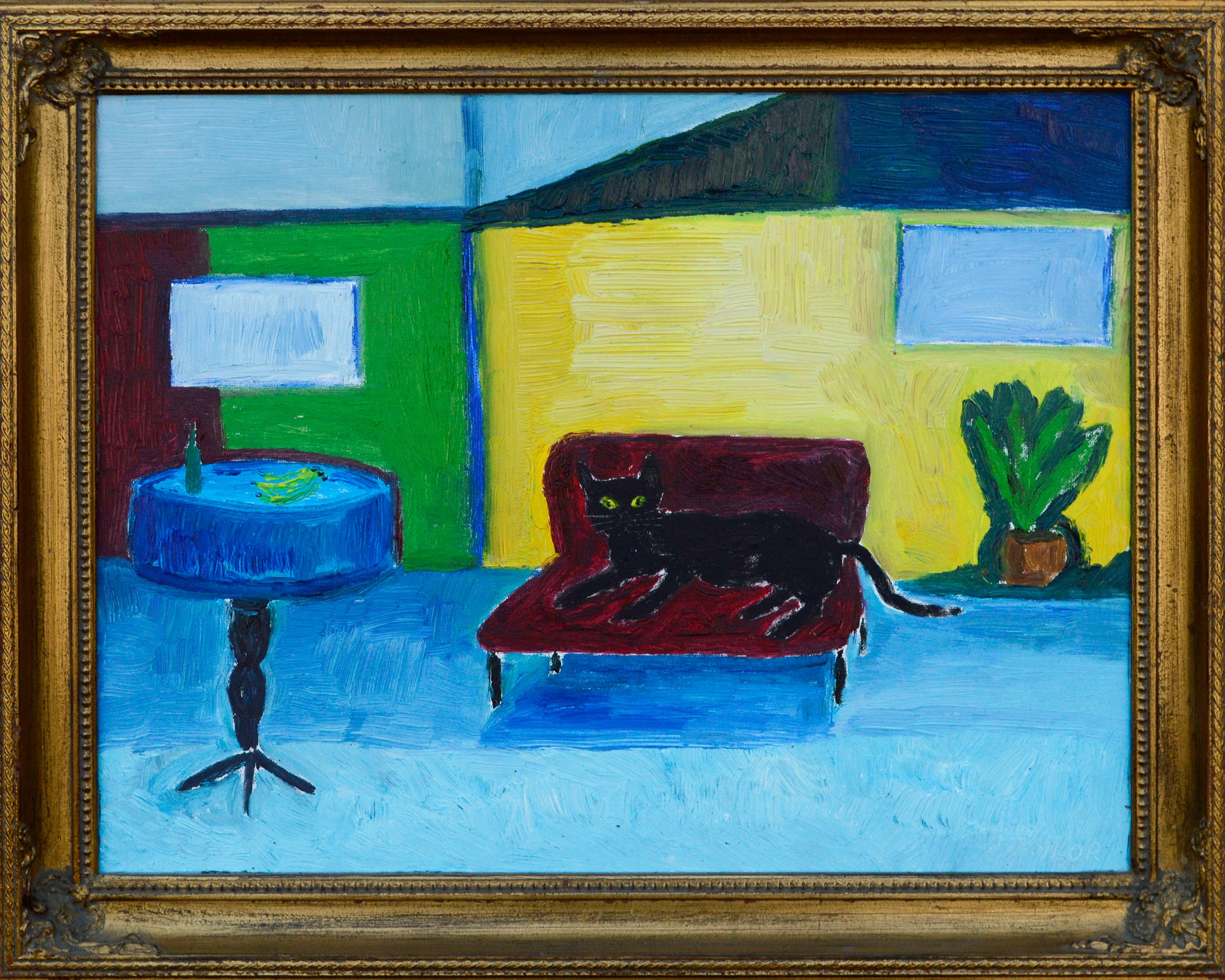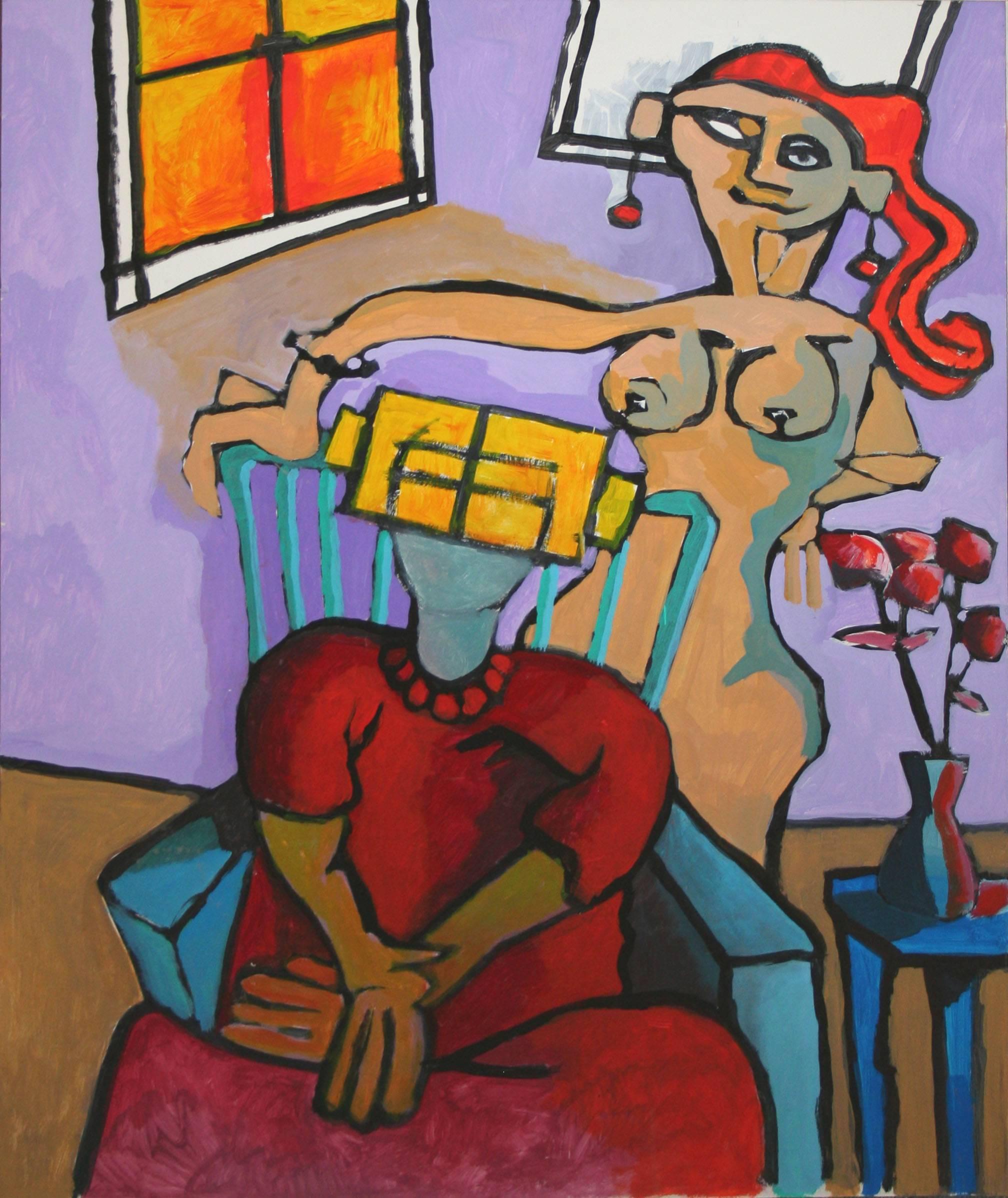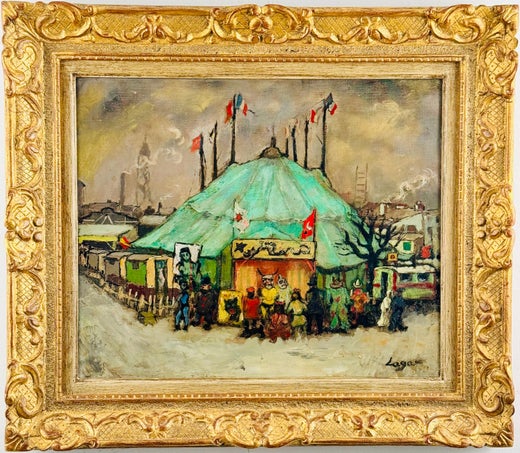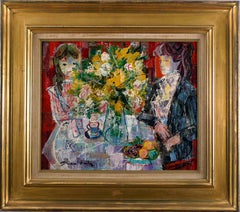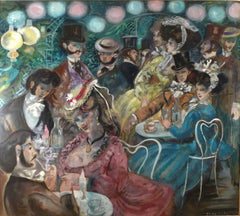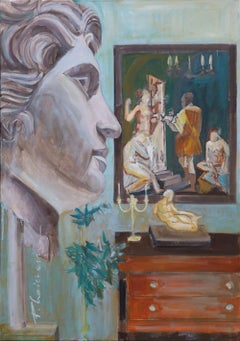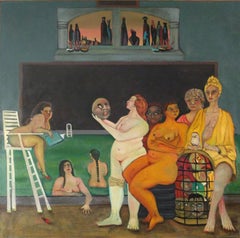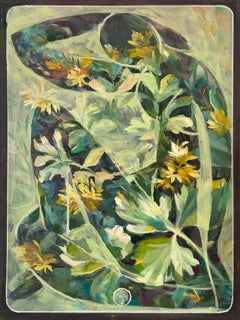"Les Musiciens", 20th Century Oil on Canvas by Spanish Artist Celso Lagar
View Similar Items
Want more images or videos?
Request additional images or videos from the seller
1 of 13
Celso Lagar"Les Musiciens", 20th Century Oil on Canvas by Spanish Artist Celso Lagar1928
1928
About the Item
- Creator:Celso Lagar (1891 - 1966, Spanish)
- Creation Year:1928
- Dimensions:Height: 23.63 in (60 cm)Width: 28.75 in (73 cm)
- More Editions & Sizes:60 x 73 cm.Price: $40,735
- Medium:
- Movement & Style:
- Period:
- Condition:
- Gallery Location:Madrid, ES
- Reference Number:1stDibs: LU1281112772572
Celso Lagar
Celso Lagar Arroyo (Ciudad Rodrigo, 1891 - Seville, 1966) was an expressionist Spanish painter of the first generation of the School of Paris, where he lived most of his life. He was influenced by avant-gardes of all kinds, such as cubism and fovism. He painted mainly landscapes and still lives. From his native Ciudad Rodrigo, he went to Madrid to be part of the workshop of one of the best sculptors of the moment, Miguel Blay. During 1910 and 1911 he visited Barcelona. Later he studied sculpture in Paris in 1911 advised by Blay, where he met Joseph Bernard, his friend Amedeo Modigliani and his future wife, the French sculptor, Hortense Begué. It will be precisely at that moment when, gradually, he leaves the sculpture in favor of painting. The outbreak of the First World War will mean, in the life and work of Celso Lagar, the beginning of a new stage. He remained in Barcelona during the war, where he achieved a certain recognition, which allows him to return to Paris. In 1919 he settled permanently in France. His time until the end of the 30s, is the moment of his greatest splendor of the artist. He manages to exhibit his works in the best Parisian galleries, his production is abundant and constant. Both in his residence in Paris and in his rooms, since 1928, in Normandy he will develop an artistic production with very specific themes: still lifes, Spanish reminiscences, landscapes and his celebrated circus scenes. After the period of avant-garde influences of all kinds (Cubism, Fauvism, Vibrationism, Biologism, Simultaneism, Ultraist, ...), Celso Lagar will find his own path marked mainly by Goyesque and Picasian inspiration. Critical and public recognition increases. With the onset of World War II, its golden age will end. Lagar and Hortense are forced to take refuge in the French Pyrenees amid very difficult living conditions. His return after the liberation of Paris did not have such an impact. Lagar will continue with the same themes and techniques before the war but the public is already looking for new content. Gradually, success fades and economic hardships affect the couple. At this time around the year 1950, his wife Hortense enters the hospital Broca and in 1955 dies. Lagar falls into a deep depression and will enter the psychiatric hospital of Sainte Anne. His artistic work ends completely. At that time, by court order, two auctions of the works that remained in his workshop are held, to pay for his stay in the asylum. In October 1964 he returned to Spain living in Seville with a sister until his death on September 6, 1966. His paintings are found in numerous museums throughout Europe, such as: La Rochelle, Goya Museum in Castres, Honfleur (France), Petit-Palais de Geneva, Reina Sofía National Art Center Museum, Casa Lis de Salamanca, Carmen Thyssen Museum ( Malaga) and in prestigious collections such as Crane Kallman (London) or Zborowski (Paris).
About the Seller
5.0
Vetted Professional Seller
Every seller passes strict standards for authenticity and reliability
Established in 1977
1stDibs seller since 2019
21 sales on 1stDibs
Typical response time: 5 hours
Authenticity Guarantee
In the unlikely event there’s an issue with an item’s authenticity, contact us within 1 year for a full refund. DetailsMoney-Back Guarantee
If your item is not as described, is damaged in transit, or does not arrive, contact us within 7 days for a full refund. Details24-Hour Cancellation
You have a 24-hour grace period in which to reconsider your purchase, with no questions asked.Vetted Professional Sellers
Our world-class sellers must adhere to strict standards for service and quality, maintaining the integrity of our listings.Price-Match Guarantee
If you find that a seller listed the same item for a lower price elsewhere, we’ll match it.Trusted Global Delivery
Our best-in-class carrier network provides specialized shipping options worldwide, including custom delivery.More From This Seller
View All"Interieur aux Fleurs Jaunes" 20th Century Oil on Canvas by Emilio Grau Sala
By Emilio Grau Sala
Located in Madrid, ES
EMILIO GRAU SALA
Spanish, 1911 - 1975
INTERIEUR AUX FLEURS JAUNES
signed "Grau Sala" (lower left)
signed again, located, dated and titled "Grau Sala, Paris 61, Interieur aux fleurs jaunes" (on the reverse)
oil on canvas
15 x 18-1/4 inches (38 x 46 cm.)
framed: 23-1/2 x 26-1/2 (59.5 x 67 cm.)
PROVENANCE
Private Parisian Collection
Interieur aux fleurs jaunes
This interior with two female figures where also the plans made in different colors are drawing the composition.
The abundant pictorial material distributed in geometric portions, gives life to the tablecloth and mother and daughter figures, in black and white colors of the jacket, while the black line takes care of the environments so as not to separate them.
The fruit bowl and flowers give a cheerful touch with their pastel tones.
Emilio Grau Sala came from a family of artists. He was born in Barcelona in 1911 and his father, a good cartoonist, had been one of the promoters of the "Salon des Humanistes" and made his exhibitions normally in "Sala Parés", Barcelona.
His first works were exhibited at the Salon des Independents. In the years 1930-33 he had painted under the influence of Cubism, especially that of Torres García. It is from that time a painting of the port of Barcelona, geometric and structural, which completely anticipated what would later be his work. His personality began fully painting watercolors and oils with a certain fantasy character, with a point of decorative instinct and themes full of naivety and grace. Romantic interiors, paddocks, port scenes, sailors, etc.
Grau Sala was essentially a Mediterranean painter, son of post-impressionism and enriched with French painting of the last fifty years. Mediterranean because his work has the color and light of that land.
He understood and assimilated impressionist painting very well, and for that reason he was never subject to the modules of a formulist realism, nor the sexigencias of the forms.
In Paris he found the best environment to give us a fruitful and intense work, because he could use the expressive potential of French art to enrich it.
All this made him a very esteemed artist everywhere where his work was known. He was also very often required to illustrate books and publications in Paris. Also his posters were very successful.
He painted a large number of subjects, but perhaps the theme of horse racing is where you can see in a very clear way the joyful and optimistic life that was lived at that time. In this fabric there is an explosion of juicy and vivid colors full of ingenuity and simplicity in its composition. Only a teacher could turn the complicated into something simple and beautiful. Before this work we feel a deep emotion, the emotion of before starting a horse race. Joy and nervousness at the same time. Especially since it is a direct emotion. There are no intermediaries between our eyes and what the work intends to tell us. This is precisely what seduces and catches us of this painting.
His works can be found in the Museums of the Villa de Paris, L'Ile de France Museum, at the Château de Sceaux, Honfleur Museum, La Rochelle Museum, Barcelona Museum...
Category
1960s Fauvist Interior Paintings
Materials
Canvas, Oil
Francisco Bores, Sans titre
By Francisco Bores
Located in Madrid, ES
FRANCISCO BORES
Spanish, 1898 - 1972
SANS TITRE
signed and dated "Borès 42" (lower left)
oil on panel
13-3/4 x 10-5/8 inches (35 x 27 cm.)
framed: 19 x 15-3/4 inches (48 x 40 cm.)
BIBLIOGRAPHY:
Francisco Bores, Reasoned Catalogue, Volume I - Painting 1917-1944, Museo Nacional Centro de Arte Reina Sofía, Madrid, 2003, nº 1942 / 63, reproduced in p. 494
PROVENANCE
Carmen Bores Collection, Francisco Bores daughter
Private Collection, Madrid
Francisco Bores López (Madrid, May 5, 1898 - Paris, May 10, 1972) was a Spanish painter of the so-called New School of Paris.
His artistic training originated both in the Cecilio Pla painting academy, where he met Pancho Cossío, Manuel Ángeles Ortiz or Joaquín Peinado, and in the literary gatherings in Madrid related to ultraism.
At this time he made engravings and woodcuts for a large number of magazines such as Horizonte, Cruz y Raya, Index, Revista de Occidente. In 1922 he participated in the National Exhibition of Fine Arts.
In 1925 he participated in the first exhibition of the Iberian Artists Society. The limited success of this exhibition pushes him to go to Paris. In this city he shared a studio with the Spanish painter Pancho Cossío and also met Picasso and Juan Gris.
In 1927 he held his first solo exhibition in Paris. From this moment on, Bores integrates himself into the Parisian artistic environment where he will live practically his entire life. In 1928, his first exhibition in a gallery in the United States, in 1930 he exhibited again, within a group exhibition at the Museum of Modern Art in New York.
In the following years, he continued exhibiting in different galleries in Paris, such as the Georges Petit Gallery, the Bernheim Gallery and the Vavin Raspail Gallery. He also participates in several group exhibitions, highlighting the Exhibition of Contemporary Spanish Art...
Category
1940s Fauvist Interior Paintings
Materials
Oil, Panel
Paddock
By Emilio Grau Sala
Located in Madrid, ES
EMILIO GRAU SALA
Spanish, 1911 - 1975
PADDOCK
signed "Grau Sala" (lower right)
oil on canvas
21-1/3 x 25-1/2 inches (54 x 65 cm.)
framed: 27-1/2 x 32 inches (70 x 81 cm.)
PROVENANCE...
Category
1960s Post-Impressionist Figurative Paintings
Materials
Canvas, Oil
"Le Moulin de la Galette", Large 20th Century oil on canvas by Emilio Grau Sala
By Emilio Grau Sala
Located in Madrid, ES
EMIILIO GRAU SALA
Spanish, 1911 - 1975
LE MOULIN DE LA GALETTE
signed Grau Sala (lower right)
oil on canvas
59-1/4 X 67-1/4 inches (150.5 X 170 cm.)
framed: 62-1/2 X 70-1/4 inches (...
Category
1930s Post-Impressionist Figurative Paintings
Materials
Canvas, Oil
"Espagnoles, 1971", 20th Century Oil on Canvas by Artist Emilio Grau Sala
By Emilio Grau Sala
Located in Madrid, ES
EMILIO GRAU SALA
Spanish, 1911 - 1975
ESPAGNOLES, 1971
signed "Grau Sala" (lower left)
signed again, dated and titled "Grau Sala, 1971, espagnoles" (on the reverse)
oil on canvas
1...
Category
1970s Post-Impressionist Figurative Paintings
Materials
Canvas, Oil
The Cardinal's Visit
Located in Madrid, ES
SALVADOR SÁNCHEZ BARBUDO
Spanish, 1857 - 1917
THE CARDINAL'S VISIT
signed, located and dated "Barbudo / ROMA 1902" (lower right)
oil on canvas
22 x 33-2/3 inches (55.5 x 85.5 cm.)
framed: 36-1/2 x 48-1/4 inches (92.5 x 122.5 cm.)
PROVENANCE
Private Collection, Munich
LITERATURE
Visita con el cardenal combines the two most salient characteristics of Sánchez-Barbudo's work: the search for novelty of theme and narrative content, and the use of minutely detailed brushwork and luminosity. Sánchez-Barbudo specialised in elaborate 'costume pictures', delighting the viewer with impressive details finely rendered with dazzling technical virtuosity.
Here, Sánchez-Barbudo depicts a well-to-do bourgeois family receiving a cardinal in their home. The interior, sumptuously furnished in the rococo style, along with the rich costumes and fabrics, are beautifully observed. Yet beyond the high technique lavished upon the composition, the treatment is comic and full of character and suffused with a gently satirising anti-clericalism.
The cardinal, far from getting the attention he expects, is, literally, sidelined, his expression and body language showing his pique. There is no doubt that contemporary collectors and spectators took pleasure in the sight of noble self-respecting figureheads of the church being brought back down to earth. The comedy was appealing, and the message suited the prevailing political mood of an increasingly secular middle-class buying public.
Salvador Sánchez Barbudo was born on March 14, 1857 in Jerez de la Frontera (Cádiz). He was one of the most important Spanish artists of the "casacón" genre, who followed the Fortuny tradition in Rome. During his childhood he was under the protection of the Marquis del Castillo and in 1875 he moved to Seville where he attended the School of Fine Arts, becoming a disciple of José Villegas...
Category
Early 1900s Realist Figurative Paintings
Materials
Canvas, Oil
You May Also Like
Looking at the World
By Paula Craioveanu
Located in Santa Monica, CA
Oil on canvas
Category
21st Century and Contemporary Fauvist Interior Paintings
Materials
Canvas, Oil
$3,040 Sale Price
20% Off
Woman in rocking chair oil on canvas painting fauvism nude
By Jordi Curos
Located in Barcelona, Barcelona
Jordi Curós Ventura (1930-2007) - Woman in rocking chair - Oil on canvas.
Work measurements 61x46 cm.
Frameless.
Jordi Curós Ventura (Olot, Girona, March 4, 1930) is a Spanish paint...
Category
1970s Fauvist Figurative Paintings
Materials
Oil, Canvas
bathers (the kiss), female nude figures indoor pool green grey tones
By Stephen Basso
Located in Brooklyn, NY
female bathers by visionary artist Stephen Basso
Category
Early 2000s Fauvist Figurative Paintings
Materials
Canvas, Oil
"What about stereotypes?" 2 in the triptych. Decorative social art
Located in Zofingen, AG
The second work of the triptych “What about stereotypes? ”
Female silhouette combined with flowers - a decorative subject - but with a deep concept, a series of paintings were prese...
Category
2010s Fauvist Figurative Paintings
Materials
Canvas, Oil
$577 Sale Price
20% Off
What about stereotypes? 1 in the triptych. Female silhouette
Located in Zofingen, AG
The first work of the triptych “What about stereotypes? ”
Female silhouette combined with flowers - a decorative subject - but with a deep concept, a series of paintings were presen...
Category
2010s Fauvist Figurative Paintings
Materials
Canvas, Oil
"What about stereotypes?" 3 in the triptych. Decorative social art
Located in Zofingen, AG
The third work of the triptych “What about stereotypes? ”
Female silhouette combined with flowers - a decorative subject - but with a deep concept, a series of paintings were prese...
Category
2010s Fauvist Figurative Paintings
Materials
Canvas, Oil
Recently Viewed
View AllMore Ways To Browse
Public Enemy
Bearded Man Painting
Cristo Painting
John Singer Sargent Studies
London 2012 Poster
London 2012 Posters
Oil Painting Of Rabbi
Us House Of Representatives
Amy Hill
Andy Warhol Mickey Mouse
Drew King
House Of Igor
Mexican Religious Paintings
New York Stock Exchange
Oil Painting Moroccan Scene
Painting Of Courtship
Paintings Of Sirens
The Conspiracy

